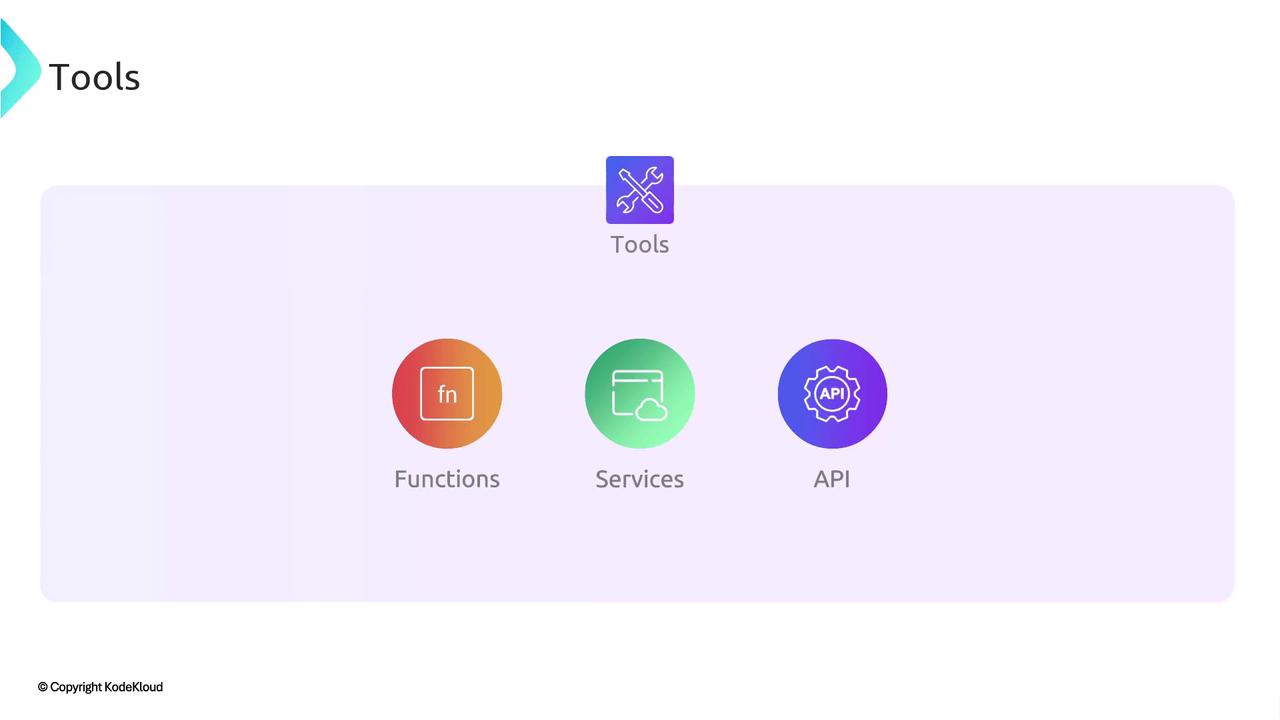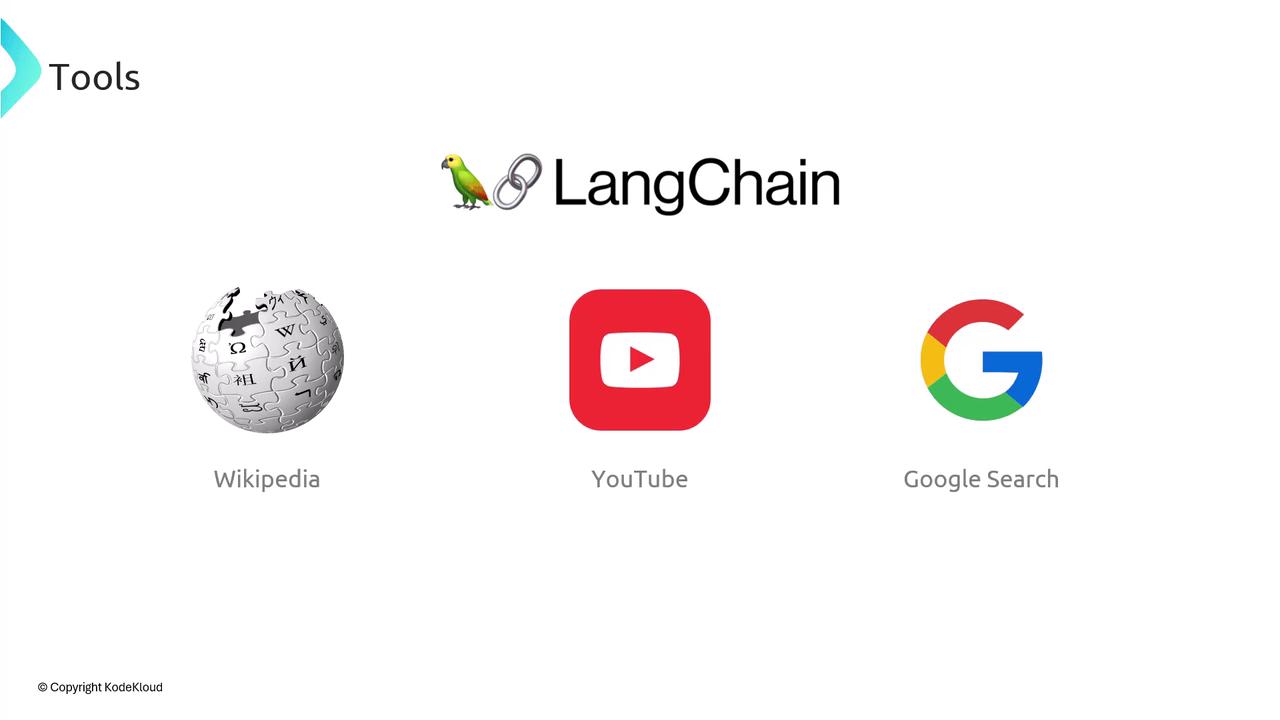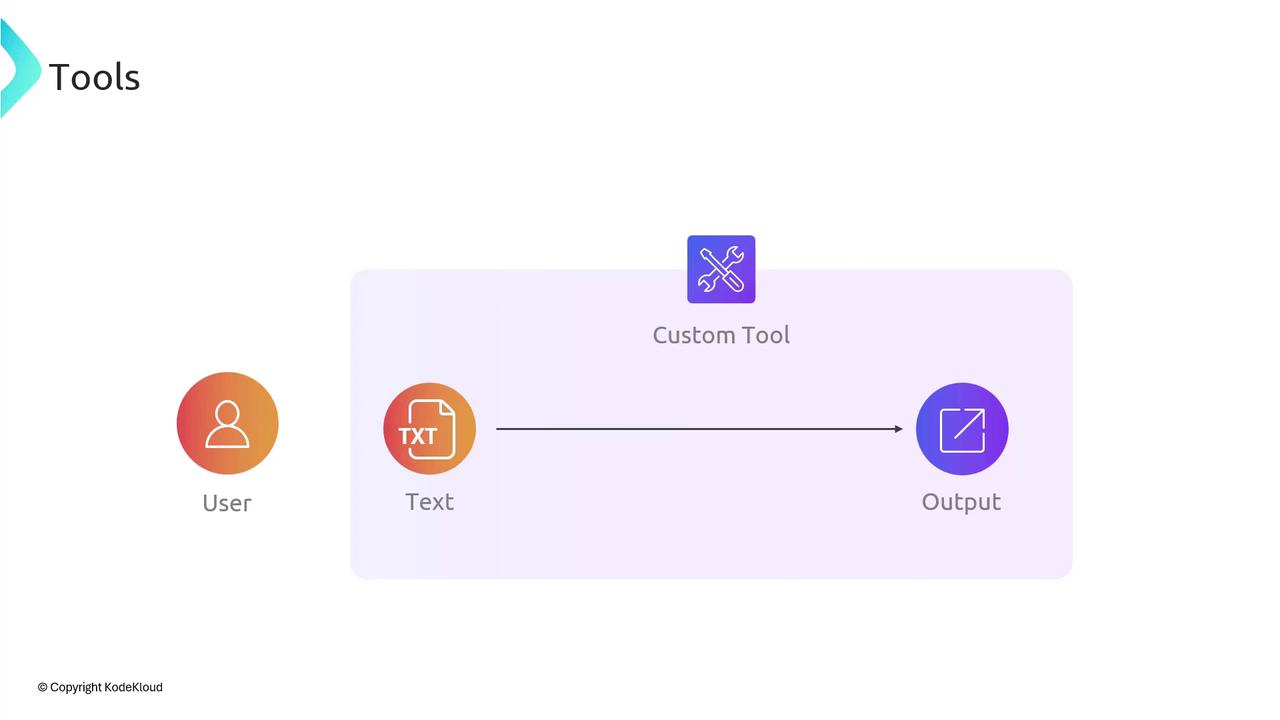LangChain
Key Components of LangChain
Tools
LangChain’s tools allow your applications to interact with external functions, services, and APIs—enabling sophisticated AI-driven workflows that go beyond pure language generation.

Built-In Tools
LangChain ships with a suite of preconfigured tools for common data sources. Use these when you need reliable access to real-time information or specialized content that enriches your language model’s output.
| Tool Name | Description | Usage Example |
|---|---|---|
| Wikipedia | Fetch summaries and article content | tool.run("Tell me about the Apollo missions") |
| YouTube | Retrieve video metadata and transcripts | tool.run("Get video transcript for 'Intro to Python'") |
| Google Search | Perform web searches with snippets | tool.run("Latest news on renewable energy") |

Creating Custom Tools
When your project requires integration with proprietary services or data sources not covered by the built-in library, you can define a custom tool in just a few steps:
- Specify the input schema (usually text).
- Call your external API or service.
- Format and return the response in a structured form.
Note
Custom tools fit seamlessly into LangChain’s architecture—just implement the run method and register your tool with an agent or chain.

Toolkits and Agents
- Toolkits: Group related tools into a single package for streamlined access.
- Agents: Automatically select and invoke the appropriate tool(s) based on the user’s query.
Combining toolkits with agents unlocks fully autonomous AI pipelines: your application can decide which services to call, compose results, and deliver a coherent response—all without manual orchestration.
Links and References
Watch Video
Watch video content